Big Picture Thesis
Even as Americans have come to terms with the idea that the economic shutdown will have to last longer than we initially thought in order to curb the spread of COVID-19, investors continue to widely expect a V-shaped recovery. Once the all-clear is sounded, goes this view, everything will go back to normal. Everyone who was laid off will get their old jobs back. All the closed restaurants and businesses will reopen. Movie theaters and malls will be packed with cash-rich consumers. All within a matter of months after the novel coronavirus is under control.
This, I argue, is little more than a pleasant fantasy. The economic recovery will be U-shaped, at best, or L-shaped, more likely. Stocks may see a V-shaped recovery, but the economy will not.
One reason for this – and not a small one – is because of the way that monetary and fiscal authorities are treating the crisis. In their mind, or at least according to their actions, it’s an unmitigated disaster, an event of pure economic destruction, rather than an opportunity for renewal and revitalization.
In short, they’re treating it like a house fire instead of a forest fire. If a house catches on fire, the items consumed in flames cannot be retrieved, regardless of insurance. But forest fires, as ecologists have learned over time, are different. They are a necessary part of maintaining the health of the ecosystem.
The field of economists could learn a lot from ecology. In our present situation, economists and investors alike would benefit from understanding how recessions are like forest fires – and what happens when they aren’t treated that way.
The Natural Cycle of Destruction and Creation
In every forest fire lie the seeds of rebirth, renewal, and rejuvenation.
That statement is counterintuitive. When humans see destruction in nature, we want to stop it, to mitigate it, to prevent harm. Our instinctive response as stewards of the world’s richness and beauty is to stamp out the ruination, death, and suffering that comes from forest fires. After all, it isn’t just trees and plants that are burned.
Insects and animals – like the majestic spotted owl – sometimes perish as well. (Though, generally speaking, animal casualties of wildfires are few.)
Besides, forest fires are often caused by humans, and thus, we feel a responsibility to put them out. When fires ravage an ecosystem because of human industry or a stray cigarette butt, we feel it’s our duty to stop it.
The counterintuitive truth is that, at least when it comes to coniferous or boreal forests, fires should not be put out, regardless of their origin. Aside from preventing harm to people, forest fires should be allowed to run their course.
Before humans ever learned to rub stones together and spark their own fires, nature produced its own fires. Whether it be from a strike of lightning or the spark of a falling rock, fires have found ways to start up for millennia without human help.
After many years without a fire, dead leaves, pine needles, branches, and underbrush build up on the forest floor. They are nature’s clutter, carpeting the ground and stifling new life by either preventing seeds from hitting the soil or suppressing the growth of saplings. This dead foliage is dry and frail – highly susceptible to catching fire from a nearby flame.
When a fire begins on the forest floor, it spreads rapidly through this dry underbrush, quickly clearing it off the ground. It consumes dead, fallen trees, as well as weeds and thick overgrowth.
The ground is charred and blackened as the flames destroy all in their path, licking upward at the crowns of looming pine trees but (at first) unable to reach their height.
Eventually, the flames ascend to the tallest reaches of the forest, either by clambering up tree trunks or by stepping upward via mid-sized trees or by the whipping of the wind. All traces of green melt into orange and red as tree crowns succumb to the inferno.
The entire forest becomes engulfed in a searching blaze. Almost nothing is spared. Temperatures reach over 2,000 degrees Fahrenheit.
Finally, after previously unimaginable devastation, the fire runs its course. It can find no more combustible material to consume. The flames die down. Red embers fade to orange, then to a smoldering black. A foggy haze blankets the forest and chokes the air.
At long last, the smoke clears. The calamity is over. But the charred, skeletal forest is a mere shade of its former elegance.
Then, something wonderful happens.
Soon after the smoke has disappeared, regrowth begins. Minerals and nutrients that had been trapped in the decaying detritus and undergrowth are freed to return to the soil. Serotinous pinecones, sealed with a resin that melts in fire, release the seeds contained in them. These seeds take root in the newly enriched soil and are continuously fed by the remnants of burnt vegetation that seep into the ground. Sunlight bathes the previously shaded forest floor.
Life springs forth from the ashes. For every old tree that burned, a dozen healthy saplings rise up around it, all contending for sunlight.
The forest becomes home to a greater diversity of plant and animal life. New plants and trees sprout up that could never have survived in the persistent shade of the forest canopy before. Birds nest in the burnt-out hollows of fallen tree trunks. Small mammals creep into the thick greenery. Herbivores venture back to their former grazing grounds, attracted by the soft, verdant grass. New color appears as wildflowers bloom. Fireweed, so called because of its tendency to show up in the wake of a fire, blossoms and signals the oncoming of other new species.
This process has happened again and again and again throughout history. Ravenous fires that seemed to utterly destroy forest ecosystems actually led to their ultimate renewal and rejuvenation. The new life that emerged from the devastation was stronger and more vibrant than what came before it. Some plants, such as the wild lupine, have evolved to depend on regular fires to clear out overhanging foliage that would otherwise starve them of sunlight.
Here is a 55-second time-lapse video showing a forest floor burning, followed by swift regrowth of new shrubbery.
Amazing, isn’t it?
Extinguishing The Fire – And The Renewal
We humans don’t like seeing beautiful forests catch fire. So, often, we try very hard to extinguish the fire, and often we’re successful. The vast majority (98%) of all forest fires in the U.S. are successfully extinguished.
The problem is that this isn’t what nature intended for forest ecosystems. When fires aren’t allowed to burn, detritus and decay are allowed to build up on the forest floor, making the breadth and rapidity of the devastation that much worse when flames eventually do take hold.
This line of reasoning is borne out in the data. The six worst fire seasons since 1960 have all taken place since 2000, with one reason for that being that more fires are put out in order to protect homes built along the edge of forests. The costs associated with federal wildfire protection and suppression have more than tripled since the 1990s. Part of the reason for this was “aggressive fire suppression that eliminated the natural, low-intensity fires which reduced biomass levels.”
When forest fires are permitted to burn at their normal intervals of 10-20 years, the fires themselves tend to be smaller and less destructive. Often, tree crowns are left relatively unscathed such that patches of mature trees survive while dead clutter is removed from the forest floor. But when fires break out after having been suppressed for decades and decades by human intervention, they demolish the forest and eradicate all forms of life. The soil becomes so scorched that the rain washes its nutrients away into nearby rivers and streams. The forest is unable to bounce back.
Interestingly, even in controlled settings in which forest fires can be permanently halted, the result is not beneficial to the ecosystem. Ecologists at the Tall Timbers Research Station in Tallahassee, Florida, prevented fires on a 23-acre plot of forest for 40 years as an experiment. The result? A nearly 90% drop in plant diversity and the total disappearance of some fauna such as the red-cockaded woodpecker.
“Right now we’re spending billions of dollars to prevent something that is going to happen sooner or later, whether we try to stop it or not, and something that can assist us in sound land management,” says John Bailey of Oregon State University’s Department of Forest Engineering, Resources and Management.
It may always make sense to put out some fires when they threaten communities, or in other select circumstances. But periodic fire has always been a part of our forests, and we need to accept it as such, sort of like how we plan for and accept a very wet winter that comes along now and then.
Recessions Are The Forest Fires Of The Economy
I have written on numerous occasions about the unintended negative consequences of regularly backstopping the economy and markets when trouble arises. This has been done time and time again over the decades by fiscal and monetary policymakers. Long-time Fed chairman Alan Greenspan became known as “the maestro” for his ability to pull off the “Greenspan put” – the act of swooping in with monetary easing to cushion the fall of asset prices.
Unsurprisingly, this has had the effect of a long-term buildup of ever-cheaper debt across every segment of the economy. Aside from some forced debt reduction following the Great Recession, there have been no sustained periods of deleveraging since the end of World War II. Debt, like dead biomass on the forest floor, has steadily accumulated and quelled productive growth.
Recessions, like forest fires, can start in different ways. Will Murphy brings up the case of Cerro Grande, New Mexico, in which forest managers intentionally started a burn that spiraled out of control because they misjudged the climate. This is not unlike the way in which several of the last few recessions began after central bank policymakers manipulated interest rate policy without completely understanding the current state of the economy or the effect that their changes would have.
“Sometimes policymakers underestimate economic fragility,” writes Murphy, “just as forest managers miscalculate sun and wind.”
Just as forests build up organic detritus on the forest floor, preventing new life from springing up, so also does the economy gradually exude weak and unproductive businesses over time, sustained by artificially low interest rates courtesy of the central bank.
Consider the late 1990s, for instance, when Internet companies sprang up left and right, many of them lacking any viable business model. Investors didn’t care. They were too excited by the possibilities of the World Wide Web, and companies had access to cheap enough capital to survive with little to no revenue. At the first sign of trouble in 1998, rather than let the fire spread naturally, the Federal Reserve instead cut interest rates in a “mid-cycle adjustment” that prolonged and exacerbated the dot.com bubble.
When the Fed turned around and started a “controlled burn” (aka raised interest rates) in 1999 in order to tamp down on the “irrational exuberance” of the markets, it was too late. The dry detritus had built up on the forest floor of the economy like so much kindling. There were companies like Webvan, a grocery delivery business far before its time, that burned through $50 million in three years while recording total sales of $395,000 before going bankrupt. And then there was the infamous Pets.com, which spent millions on marketing while selling goods significantly below cost for years on end.
Thousands of Internet companies met their demise after the Fed began its controlled burn in 1999, and thereafter, their minerals and nutrients (i.e., assets) returned to the soil (i.e., the economy) in order to fuel the growth of new plant life (i.e., new business ventures). The reality became apparent that these inflated assets had very little value, after all. Those resources were being wasted chasing unproductive business models. That capital (human and material) needed to be freed up to pursue more healthy, productive, valuable endeavors.
The situation today is even more reminiscent of the forest deprived of fire for too long. After almost a decade of near-zero interest rates, a huge number of zombie companies (unable to service their debt without issuing new debt) have accrued, sustained by ultra-low interest rates. According to a study, which I mentioned in an article on zombie companies last May, one in eight American companies are zombified. They can’t generate enough cash to cover fixed expenses. And yet, they remain alive.
Like a thick coating of leaves and branches on the forest floor, these zombies need to be burned up so that their assets can be redistributed to healthier, stronger firms that will be able to make productive use of them. Rather than this happening, as interest rates gradually fall, they are able to find new financing and sustain themselves a little longer.
This has led to a massive buildup of unproductive debt in both the private and public sectors. And it has come about primarily due to the artificial suppression of interest rates by central banks, holding rates too low for too long.
Like forest fires, we humans don’t like recessions, so we fight them. Sometimes, our efforts are successful – in the short term. But eventually, the dry kindling that naturally builds up on the forest floor of the economy catches fire, and then the economic ravages are worse than they would have been before.
A Viral Forest Fire
What about a recession caused by a pandemic? Surely, those are different from recessions that come about due to the natural turning of the business cycle. In normal recessions, you don’t see government authorities shutting down huge swathes of the economy, but rather, struggling mightily to keep them open.
Yes, the COVID-19 recession of 2020 is different from other recessions that came before it. It isn’t the internal weight and unwieldiness of the excesses (dot.com companies in 1999; crazy mortgage originations in 2008) that are bringing this economy down. But excesses surely exist.
Like firefighters acting quickly to halt forest fires before they reach a neighborhood – or at least mitigating the damage once they’ve hit the neighborhood – we must now act swiftly to curb the unwarranted human costs of this pandemic. But as Congress and the Fed act to prevent harm to the most economically vulnerable among us, it will be interesting to watch and see if they also inadvertently prevent the natural process of destruction and renewal that should take place for the long-term health of the economy.
Will there be even more unproductive debt when all is said and done? Will there be more zombie companies? A resurgence of stock buybacks and leveraged buyouts? A systemic weakening of the banking sector?
In every recession lie the seeds of economic rebirth, renewal, and rejuvenation. Many previously healthy and profitable businesses deserve to be saved, but many others are the equivalent of dead plant matter littering the forest floor of our economy. They should burn.
That brings me to the efforts taking place on Capitol Hill right now.
The 2020 Stimulus Package
The stimulus bill that was passed by Congress is $2.3 trillion in size, which is about 10% of annual U.S. GDP. Economist Bruce Yandle puts this massive amount of money in context when he writes:
It’s about equal to the total amount of commercial and industrial loans on the books of the entire U.S. banking system. It’s one-fourth the value of all wages and salaries paid annually in the United States. It’s almost eight times the value of the entire stock of new autos and trucks in America, about eight times more than all hospital expenses incurred in the country last year, and roughly four times larger than last year’s operating costs for all U.S. colleges and universities, both private and public. It’s also in the ballpark with the $3.5 trillion spent annually to operate the entire federal government.
In short: it’s a lot of money. Whether all of it is necessary or helpful is another matter. That will remain to be seen.
Cash distributed from the federal government directly to every American (or, at least, most Americans) could have some unintended negative effects. How so? In three potential ways.
First, people are far more likely to save the money or use it for spending they were already going to do, like rent or student debt. A 2009 federal stimulus measure that sent one-time payments directly to individuals showed only “25 percent of households reported that the one-time economic stimulus payment in 2008 led them to ‘mostly increase their spending.'” If the money is mostly saved, it doesn’t stimulate GDP in the short term, but it does cause permanent erosion of the currency value.
Second, most businesses across the nation are closed. Those deemed “non-essential” cannot open in many places. So, even if people wanted to spend the money as soon as they got it, for the most part they couldn’t. The argument could be made that these checks give consumers cash to buy non-essential goods once the country comes out of the coronavirus shutdown and businesses reopen. But assuming that plan works and consumers go out and buy non-essential goods en masse as soon as the economy reopens, without a corresponding uptick in the supply of goods, what is that a recipe for? Inflation.
Third, where could consumers spend their checks immediately? Grocery stores. There’s a decent chance that sending Americans hundreds of billions of dollars all at once and telling them to go spend it will just end up exacerbating the stockpiling mania. And, again, what is a sudden surge of consumer spending funded by near-zero interest rate federal debt a recipe for? Inflation.
The fundamental reason that we never saw a surge of inflation during the quantitative easing period in the wake of the Great Recession was that the newly printed money went to banks and investors. Upon selling their bonds or mortgage-backed securities to the Fed, they did not cash out and go spend that money in the real economy. They simply pivoted over to other risk assets like stocks, corporate bonds, and real estate. The money never trickled down.
Without ever trickling down, the QE money never translated into what economists call “money” – the cash in people’s wallets or purses, bank accounts, or savings accounts – and thus, it never had a chance to increase money velocity. That’s a fancy term for the rate of transactions in the real (rather than financial) economy. Perhaps stocks traded more frequently because of QE, but consumer goods largely didn’t. Hence the lack of inflation.
The situation is much different this time.
Takeaway For Investors
As much as it would be helpful for the long-term health of the nation if bankruptcies of persistently weak firms were allowed and interest rates were normalized to a historically average range (so that we don’t keep generating more and more of these zombie companies), that probably isn’t going to happen. At least not to the extent that it should. The rescue of businesses appears broadly indiscriminate. In addition to the $325 billion+ funds allocated by Congress to provide small business loans through the Small Business Administration and the $500 billion allocated to large business loans and grants, the Federal Reserve also has several trillion to play with in saving businesses.
I suspect this will lead to a scenario, even when we’ve emerged from this coronavirus crisis, that is the economic equivalent of the Tall Timbers Research Station experiment. After 40 years without a fire, the 23-acre forest still survived, but it didn’t thrive. Creativity, vivacity, and diversity slowly faded as detritus mounted and saplings withered in excessive shade. Likewise, I suspect our economy will survive but grow increasingly anemic, with an even slower recovery from the current recession than we saw in the last one.
Rather than allow for creative destruction, I suspect the stimulus efforts will do more to freeze the economy in place and facilitate a lack of economic renewal.
Plus, with the Fed buying Treasuries in huge quantities, it isn’t too much of a stretch to say that a large portion of this fiscal stimulus package is going to be monetized. In other words, it actually won’t be future taxpayers on the hook for this spending, but rather, the printing press. In my estimation, this is a formula for inflation. It could even lead to a sudden, if temporary, inflation shock. That sounds crazy now, but Great Depression levels of unemployment sounded crazy just a few weeks ago. Not so much anymore.
That said, unless checks begin to be sent to Americans on a more sustained or indefinite basis, a long-term uptrend of inflation is unlikely. Other factors, such as demographics, technology and sustained demand destruction from the current crisis, will ensure that inflation remains tame. Besides, far more money (trillions of dollars) is being created by the Fed to go directly into the financial markets than there is being borrowed by the federal government to send directly to people.
Here’s what I had to recommend for a deflationary scenario in my September 2019 article titled “The Monetary Death Spiral“:
A deflationary scenario would occur if governments and central banks continue down the current path with policies that inflate the assets of the rich while leaving the income of the non-wealthy stagnant. Those who spend most of their disposable income will not be bidding up consumer prices in this scenario, but nor will employers feel the need to raise wages. Disinflation will persist into mild deflation.
Those who hold large amounts of debt suffer in this scenario, as the dollars paid back to the lender are of ever-increasing (even if at a slow pace) value. However, income-generating assets (even if the income remains flat over time) will be extremely valuable. This would prove a boon to dividend-paying stocks (e.g. VIG, VYM, SCHD, HDV, DVY, SMDV), real estate (e.g. VNQ, IYR, ROOF), and various alternative income-generators (e.g. MLPX, PSP, BDCS, MORT, PFF, VPU, TOLZ). Though the nominal value of the assets may gradually decline due to the increased value of the dollar, the lure of income should offset this.
With the Fed now committing to an unlimited amount of QE (its own “whatever it takes” moment) to keep ample liquidity sloshing around the financial markets, investors will have plenty of cash available to bid back up risk assets like stocks when there’s even a glimmer of light at the end of the tunnel. I suspect the recovery in the stock market, whenever stocks eventually bottom (if it hasn’t happened already), will be V-shaped due to the large amount of cash investors have to put to work. But the recovery in the economy will be U-shaped, at best. Anyone predicting a V-shaped recovery in consumer demand is, I think, being exceedingly optimistic.
Aside from however much consumer demand destruction proves long-lasting (do we really expect the unemployment rate to go back to a sub-4% rate within a few months or even a few quarters after the crisis subsides?), we also need to consider how many firms will be added to the ranks of the zombie companies because of the rapid response to ease credit market stress. Yes, many companies out there are illiquid but otherwise solvent, but some are neither. How many of those that are neither will be saved by the government’s efforts, either directly or indirectly, only to remain zombified for years and years to come?
The forest fire will likely be put out, and the forest will survive. But don’t expect to see a rush of wildflowers or a burst of saplings when the smoke clears.
Disclosure: I/we have no positions in any stocks mentioned, and no plans to initiate any positions within the next 72 hours. I wrote this article myself, and it expresses my own opinions. I am not receiving compensation for it (other than from Seeking Alpha). I have no business relationship with any company whose stock is mentioned in this article.


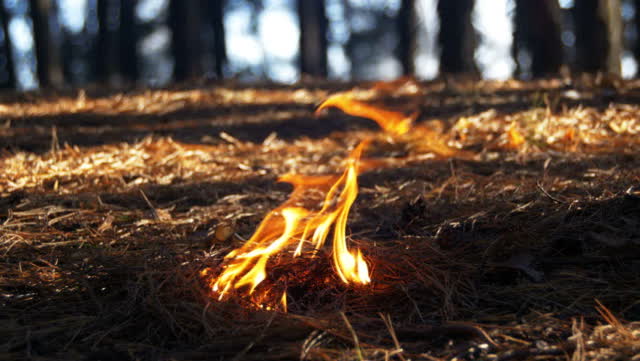
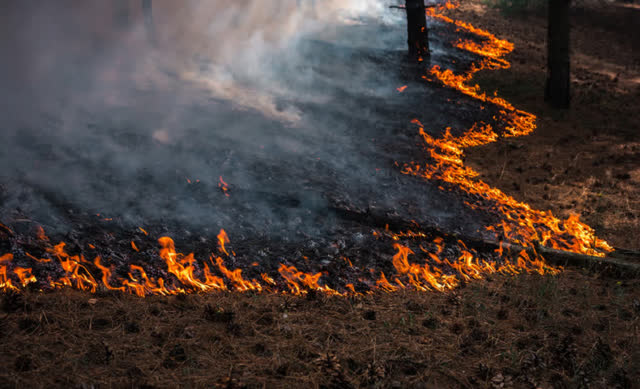
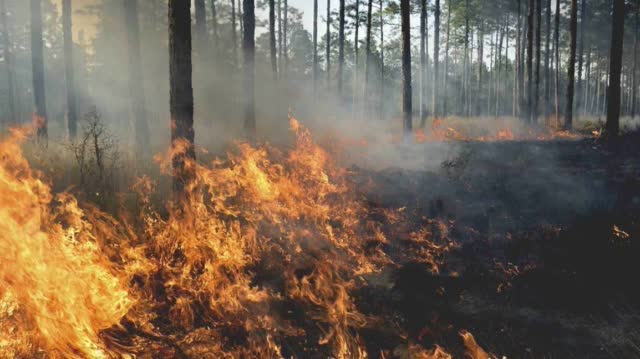
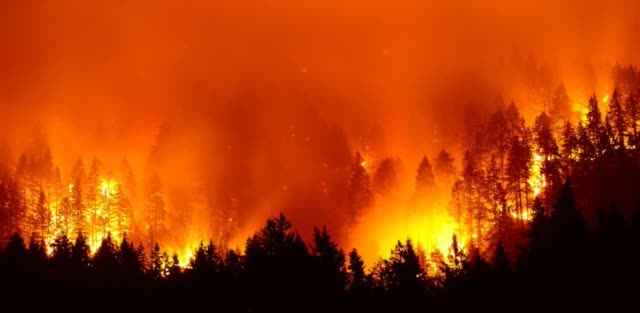
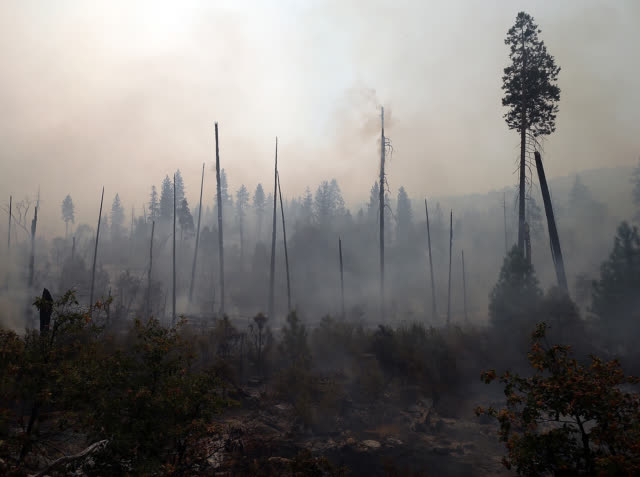
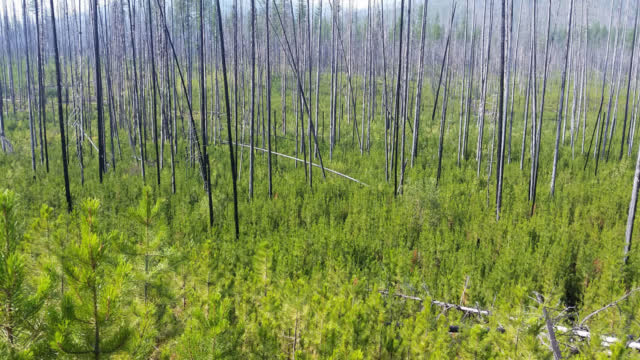
Be the first to comment